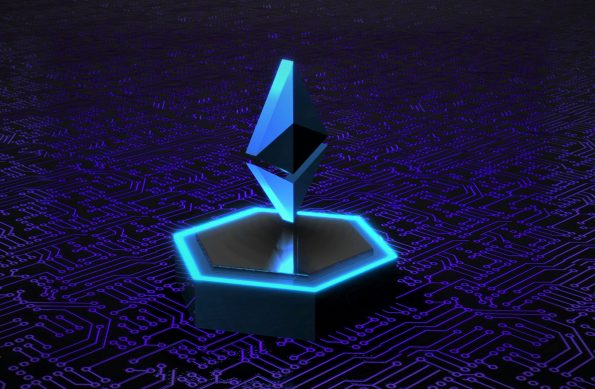Challenges and issues that Ethereum faces right now
Ethereum is a decentralized blockchain that has gained significant attention in recent years thanks to its innovative approaches, like the creation of the native cryptocurrency and smart contracts. However, like any other emerging technologies, Ethereum still presents many challenges. So, it is important to understand these issues so that the platform will benefit from long-term success.
One of the major Ethereum challenges is the difficulty of scaling the platform. Because more users join the network and the transactions are bigger, the Ethereum blockchain experiences some performance issues. This is even more problematic for decentralized finance (DeFi), where complex and large-scale transactions are very common. Because of this fact, Ethereum developers are working on discovering new solutions that will address the scalability issue, which could also boost the current Ethereum price.
Despite all these Ethereum challenges, it still offers innovative solutions and continues to push the boundaries of blockchain technology. Let’s discover the concerns present on the Ethereum blockchain.

Image source: https://unsplash.com/photos/a-computer-circuit-board-with-a-blue-light-on-top-of-it-EbbqeyHpbto
The challenges that Ethereum faces right now
Problems with smart contracts
One of the major issues with Ethereum is the problem that arises from smart contracts. While smart contracts have been a fantastic innovation, as they have the potential to automate and streamline various processes, unfortunately, they are not foolproof. This means smart contracts can be vulnerable to coding errors, bugs and even security breaches. This can lead to legal disputes and financial losses.
Another drawback of Ethereum is the fact that smart contracts are not flexible, and once they are deployed on the blockchain, they can’t be changed. This becomes even more problematic when a vulnerability is discovered in the agreements, as it becomes difficult to update or fix the contract.
Scalability issues
Another of the Ethereum challenges is platform scalability. As the application on Ethereum continues to grow and more users join the network, the space can become congested, resulting in higher fees and slower transactions. This is a significant problem, especially for decentralized applications requiring low-cost and fast transactions.
Ethereum 2.0 aimed to address the scalability issues by implementing a Proof of Stake (PoS) consensus mechanism, shard chains and many other optimizations. All these solutions were designed to improve the platform’s throughput and allow more transactions to be processed simultaneously.
Interchain communication and interoperability
Interchain communications and interoperability are other challenges for Ethereum. Because the blockchain ecosystem continues to expand, there is an imminent need for blockchains to interact and seamlessly communicate with each other. This is crucial for the blockchain industry’s overall growth and decentralized finance (DeFi) development.
Ethereum has the number one place as the leading blockchain platform, and because of this, it must find solutions. This can be done by developing standards and protocols for interoperability and cross-chain communication.
The presence of Ethereum killers
The term Ethereum killer describes an asset that can mitigate the flaws present on the Ethereum blockchain. Because these new digital currencies promise to solve some of the present challenges, they can take the place of the second-largest cryptocurrency over time. Here are the leading Ethereum killers:
Cardano
Cardano has gathered a vast, enthusiastic community because it has some attributes that can solve the problems present in Ethereum. As it supports the creation of smart contracts and decentralized apps, it has become one of the most hyped Ethereum killers. Experts think Cardano is a worthy Ethereum killer because it functions on deflationary principles and has a fixed coin supply. What makes Cardano different from Ethereum is the fact that it offers better stability and security with the help of its multi-layer blockchain.
Polkadot
Polkadot was brought to life by one of the co-founders of Ethereum, Garvin Wood, who aimed to solve the issues faced by Ethereum. What makes this virtual coin different from the second-leading cryptocurrency is that the smart contracts run independently on its blockchain. On Polkadot, smart contracts run on parachains that don’t have a connection with the main chain.
Solana
Solana is one of the fastest platforms ever developed, which was created with the primary purpose of making the blockchain faster. Solana has a Proof-of-Stake and Proof-of-History algorithm that creates nodes without negotiation in the platform.
Solutions for the issues faced by Ethereum
Vitalik Buterin, one of the co-founders of Ethereum, proposed a development roadmap designed to improve the functionalities and capacity of the network. The roadmap splits into five main upgrades, including:
The Merge: The Merge is an integral part of the roadmap, and in 2024, it aims to maintain a robust PoS consensus mechanism. The Merge occurred in September 2022, when Ethereum changed from a proof-of-Work model to a Proof-of-Stake one.
The Surge: The Surge targets the achievement of 100,000 transactions per second, which could significantly improve blockchain scalability. Interoperability and cross-rollup standards are issues that the Ethereum team wants to solve, which could be done with further upgrades.
The Scourge: The Scourge wants to mitigate risks associated with liquidity staking pools, Maximum Extractable Value (MEV), and rollups to fix some of the concerns of the Ethereum ecosystem.
The Verge: The Verge is designed to improve efficiency in block validation. As the on-chain transactions volume grows further, this optimization could be imperative for maintaining Ethereum’s scalability.
The Purge: The Purge wishes to make the protocol more accessible and user-friendly to developers. This simplification can limit network participants’ costs and eliminate technical problems, which could enhance the overall usability and functionality of the Ethereum network.
The Splurge: The Splurge gathers all the elements critical to the growth of Ethereum, from human coordination to ecosystem improvement and sustainability, which shows the commitment of Ethereum to support and nurture its vibrant community.
Conclusion
While Ethereum has grown dramatically in the past, some features still hinder future appreciation of this digital coin. This is why it is crucial to understand the issues that Ethereum is currently facing so that people will come up with solutions to the Ethereum challenges.

